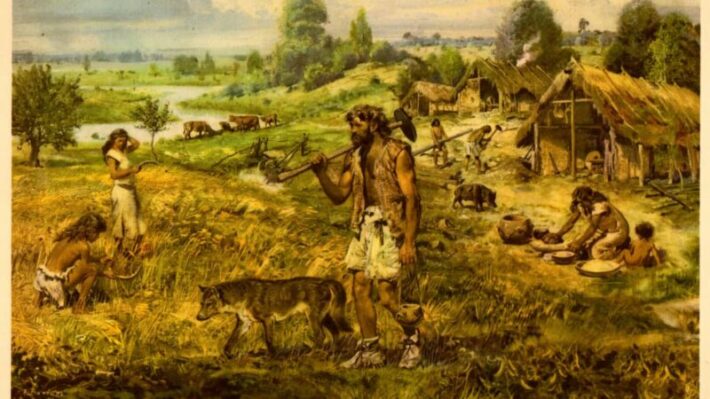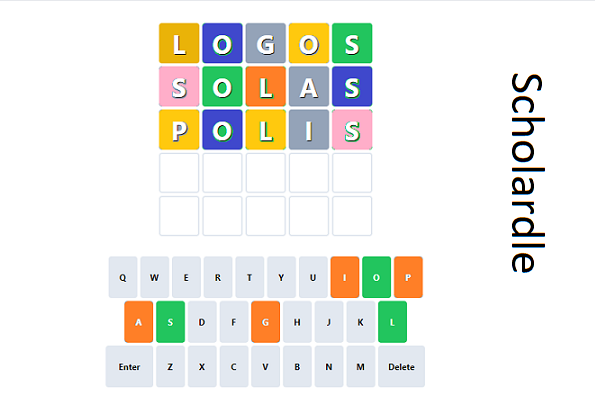Lifestyle
Exploring the Impact of the Neolithic Revolution

From humble beginnings to shaping the course of humanity, the Neolithic Revolution stands as a monumental turning point in our history. It was during this transformative era that humans transitioned from nomadic hunters and gatherers to settled farmers, forever altering our relationship with the land and each other. Brace yourself for an exhilarating journey as we delve into the profound impact of this revolution – uncovering its ripple effects on agriculture, social structures, technology, and much more. Get ready to witness how a small seed sowed thousands of years ago grew into a flourishing civilization that continues to shape the world we live in today!
Introduction to the Neolithic Revolution
The Neolithic Revolution, also known as the Agricultural Revolution, was a significant period in human history that marked the transition from a nomadic, hunter-gatherer lifestyle to a more settled way of life. It is believed to have taken place around 12,000 years ago in different parts of the world such as the Middle East, China, and Mesoamerica.
Before the Neolithic Revolution, humans lived in small bands or tribes and relied on hunting animals and gathering wild plants for survival. This lifestyle required constant movement in search of food sources and provided little stability or predictability. However, with the emergence of agriculture during this period, everything changed.
One of the key developments during the Neolithic Revolution was the domestication of plants and animals. People started cultivating crops like wheat, barley, rice, and maize instead of solely relying on wild plants for sustenance. Similarly, they began domesticating animals such as goats, sheep, cows, pigs, and horses for agricultural purposes.
This shift from hunting-gathering to farming had a profound impact on human society. With a steady supply of food available through agriculture, people were able to settle down in one place instead of constantly moving around in search of food. This led to the development of permanent settlements and villages where people could live together in larger groups.
As communities grew larger and more complex due to sedentary living arrangements brought about by agriculture practices like irrigation systems and crop rotation techniques were developed. These innovations allowed for more efficient use of
What Led to the Neolithic Revolution?
The Neolithic Revolution, also known as the Agricultural Revolution, was a pivotal point in human history that marked the transition from hunting and gathering societies to sedentary farming communities. This period of dramatic change occurred around 12,000 years ago and had a profound impact on the way humans lived and interacted with their environment.
So what exactly led to this monumental shift? The Neolithic Revolution did not happen overnight, but rather it was a gradual process fueled by various factors that ultimately transformed human societies forever. In this section, we will delve into the key elements that contributed to the emergence of agriculture and settled living during this critical time period.
1. Climate Change
One of the primary catalysts for the Neolithic Revolution was climate change. The end of the last Ice Age brought about significant changes in weather patterns which created more hospitable environments for plant growth. As glaciers retreated and temperatures rose, fertile lands were uncovered, providing ideal conditions for crops to thrive. This allowed early humans to transition from being nomadic hunter-gatherers who followed animal herds in search of food, to staying in one place and cultivating their own crops.
2. Population Pressure
As populations grew during the Paleolithic era (Old Stone Age), resources became scarce and competition for survival intensified amongst groups of humans. This led some communities to start exploring new ways of obtaining food beyond hunting and gathering. With climate change creating favorable conditions for agriculture, these groups were able to take advantage of this opportunity by settling down in one
– Climate change and its effects on human survival
Climate change is a global phenomenon that has been rapidly intensifying over the past few decades. It refers to the long-term changes in average weather patterns and temperatures on Earth, caused by various natural and human factors. The Neolithic Revolution marked a significant turning point in human history, as it led to the development of agriculture and settled societies. However, this event also had an impact on climate change, with its effects being felt on human survival.
The Neolithic Revolution brought about major changes in how humans lived their lives. Instead of relying solely on hunting and gathering for food, people started practicing agriculture and domesticating animals. This shift towards more sedentary lifestyles resulted in increased deforestation as trees were cleared for cultivation and settlements. The burning of wood for fuel also contributed to rising levels of carbon dioxide (CO2) in the atmosphere. These activities significantly altered the Earth’s natural carbon cycle, leading to an increase in greenhouse gases and contributing to global warming.
Global warming has numerous consequences that pose a threat to human survival. One of its most immediate impacts is the rise in sea levels due to melting glaciers and ice sheets, which can result in coastal flooding and displacement of people living near the coastlines. This phenomenon can also lead to saltwater intrusion into freshwater sources, making them unusable for drinking or irrigation purposes.
Moreover, climate change can disrupt agricultural practices by altering weather patterns such as rainfall and temperature. This can cause crop failures or decrease crop yields, resulting in food shortages and famine – especially
– Development of agriculture and domestication of plants and animals
The Neolithic Revolution, also known as the Agricultural Revolution, was a major turning point in human history. It marked the beginning of a new way of life for early humans, characterized by settled communities and the development of agriculture. Prior to this period, humans were primarily hunter-gatherers, relying on wild plants and animals for their sustenance. However, with the advent of the Neolithic era around 12,000 years ago, humans began to domesticate plants and animals, leading to significant changes in their lifestyles and societies.
The development of agriculture during the Neolithic Revolution had a profound impact on human civilization. By learning how to cultivate crops such as wheat, barley, rice, and maize, early humans were able to produce a steady supply of food without having to rely solely on hunting and gathering. This allowed them to settle in one place rather than constantly moving in search of food sources. As a result, villages and towns emerged where people could live together in larger numbers.
One key aspect of agriculture that led to its success was the domestication of plants. Domestication involves selectively breeding plants from their wild counterparts for desirable traits such as larger size or tastier fruits. This process took thousands of years but resulted in important crops that are still widely consumed today. Some examples include wheat from wild grasses found in modern-day Turkey and rice originating from wild grasses found in Asia.
Domestication not only provided a stable food supply but also allowed for surplus production. With more food available than
Impact on Human Society
The Neolithic Revolution, also known as the Agricultural Revolution, was a significant turning point in human history that transformed societies from hunter-gatherer lifestyles to settled agricultural communities. This shift had a profound impact on human society, shaping the way we live, work, and interact with each other.
One of the key impacts of the Neolithic Revolution was the development of permanent settlements. Before this period, humans were nomadic, moving from place to place in search of food. However, with the discovery and cultivation of crops such as wheat and barley, people began to settle down in one place for longer periods. This led to the establishment of permanent villages and towns, creating a sense of belonging and community among individuals.
With settled communities came division of labor. As agriculture required more time and effort than hunting and gathering did, people started specializing in different tasks such as farming, animal husbandry, pottery making, etc. This specialization resulted in an increase in productivity and efficiency within communities. It also led to social hierarchy as some individuals became wealthier or held higher positions due to their specialized skills.
The surplus food produced through agriculture brought about by the Neolithic Revolution also led to population growth. With a stable food supply available year-round, families no longer needed to be constantly on the move in search of resources for survival. This allowed them to have larger families which eventually led to an increase in overall population size.
Moreover, with permanent settlements came new forms of social organization such as governments and religions. As populations
– Shift from a nomadic lifestyle to settled communities
The Neolithic Revolution, also known as the Agricultural Revolution, marks a significant turning point in human history. It refers to the shift from a nomadic lifestyle of hunting and gathering to a more settled way of life based on agriculture and domestication of animals. This change took place approximately 10,000 years ago and had a profound impact on human civilization.
Before the Neolithic Revolution, humans lived as hunter-gatherers, constantly moving from one place to another in search of food. They relied primarily on wild plants and animals for sustenance and had no permanent settlements. However, with the discovery of agriculture, people were able to produce their own food through farming and herding animals. This led to the development of settled communities that laid the foundation for modern society as we know it today.
One of the main reasons for this shift from a nomadic lifestyle to settled communities was the ability to control food production. Through farming techniques such as irrigation and crop rotation, early humans were able to grow crops year-round instead of relying on seasonal availability. This meant that they no longer had to travel long distances in search of food but could stay in one place and cultivate their land.
As farming became more efficient, surplus food was produced which allowed for specialization within societies. Some individuals were free from agricultural duties and could focus on other tasks such as crafting tools or building structures. This led to the development of trade networks between different groups which further contributed to social complexity.
Settled communities also provided stability for families
– Development of social hierarchy and specialization of labor
The Neolithic Revolution, also known as the Agricultural Revolution, was a pivotal point in human history that transformed the way societies functioned. It marked the shift from a nomadic lifestyle to a more sedentary one, as well as the transition from hunting and gathering to agriculture and animal domestication. This significant change not only impacted people’s ways of living but also led to the development of social hierarchy and specialization of labor.
As humans settled in permanent communities, their social structure became more complex. With a surplus of food being produced through agriculture, some individuals were able to focus on tasks other than acquiring food for survival. This eventually led to the emergence of distinct social classes within communities.
At the top of this new social hierarchy were elites or ruling classes who controlled resources and held power over others. They were typically landowners or religious leaders who had access to the most fertile lands and controlled key resources such as animals, tools, and weapons. Below them were farmers who worked on their land and provided them with food in exchange for protection.
With agriculture becoming an essential part of society, skills such as farming, herding livestock, weaving, pottery making, and metalworking became highly valued. These specialized skills allowed certain individuals to gain wealth and status within their community. As a result, professions emerged based on these skills which further solidified social classes.
Specialization of labor not only led to an increase in productivity but also created interdependence among members within communities. Farmers needed potters to make containers
– Formation of permanent settlements and cities
The Neolithic Revolution, also known as the Agricultural Revolution, was a crucial turning point in human history. It marked the beginning of a new era where humans transitioned from a nomadic lifestyle to a settled and more organized way of life. One of the most significant impacts of this revolution was the formation of permanent settlements and cities.
Before the Neolithic Revolution, humans were hunter-gatherers who constantly moved from one place to another in search of food. However, with the discovery and cultivation of crops such as wheat, barley, and rice, humans began to settle down in one place for longer periods. This shift from hunting and gathering to farming led to a sedentary lifestyle that played a vital role in shaping human civilization.
As people started cultivating crops, they needed to stay close to their fields for protection and maintenance. Thus, small villages began to emerge around fertile land areas near rivers or streams. These early settlements were characterized by simple mud huts or tents made from animal skins and branches.
Over time, these settlements grew into larger communities with more sophisticated structures such as houses made from clay bricks or stone. As agriculture became more advanced and productive, surplus food was produced which allowed some individuals within the community to specialize in other occupations such as pottery making or metalworking. This specialization led to an increase in trade between different settlements, further contributing to their growth.
The development of permanent settlements also gave rise to social stratification within societies. With increased resources and wealth came social classes and hierarch
Impact on Technology, Art, and Religion
The Neolithic Revolution, also known as the Agricultural Revolution, had a profound impact on human societies and their development. One of the most significant aspects of this revolution was its impact on technology, art, and religion. These three facets of society were deeply intertwined during the Neolithic period and continued to evolve together throughout history.
Technology:
The transition from a nomadic lifestyle to a settled one required significant technological advancements. The domestication of animals for agriculture led to the development of tools such as plows, sickles, and hoes, which greatly increased efficiency in farming. This allowed humans to produce surplus food and led to specialization in other fields such as pottery making, metalworking, and textile production.
With more time freed up from hunting and gathering for food, early humans were able to experiment with new technologies. The use of fire for cooking and clay for pottery emerged during this period. As agricultural communities grew in size and complexity, so did their need for better infrastructure such as irrigation systems, roads, and storage facilities. These developments laid the foundation for further technological advancements in later civilizations.
Art:
The shift from a nomadic lifestyle also had a significant impact on the artistic expression of these early human societies. With more permanent settlements came opportunities for people to create art that reflected their daily lives. Cave paintings depicting scenes of hunting or agricultural activities have been found from this period.
As communities became more organized around agriculture, social hierarchies emerged leading to an increase in specialized craftspeople who created objects not
– Invention of tools for farming,
The development of agriculture during the Neolithic Revolution was a turning point in human history. It allowed for a shift from a nomadic, hunter-gatherer lifestyle to settled communities with a reliable food source. However, this transition would not have been possible without the invention of tools specifically designed for farming.
Before the Neolithic Revolution, early humans relied on simple tools made from stone, bone, and wood to hunt animals and gather wild plants. These tools were not suitable for farming, as they were mainly used for cutting and scraping rather than digging or planting. As humans began to settle in one place and cultivate crops, there was a need for more advanced tools that could aid in the process.
One of the earliest agricultural tools developed during this period was the digging stick. This tool consisted of a long wooden shaft with one end sharpened into a point. The sharp end was used to break up soil and create holes for planting seeds or bulbs. This simple tool was effective in loosening soil and making it easier to plant crops.
Another essential tool invented during this time was the hoe. Similar to the digging stick, it had a long handle with one end shaped into a flat blade. Hoes were used for both breaking up soil and removing weeds around growing plants. They allowed farmers to work more efficiently by covering more ground in less time.
As agriculture continued to develop, so did the tools used by farmers. The plow is an iconic example of an innovative tool that revolutionized farming practices during the
Lifestyle
Farmgirl Lacy: the Influencer, So Well-Known?

American social media celebrity Farmgirllacy is from. Social media is highly influenced by many others. But Fargirllacy’s large social media following helped her become well-known. Viral content is made simple by social media users. On February 29, 1988, Fargirllacy was born in the United States. She enjoys sharing videos on social media, which is a must for making new acquaintances. The biography, career, net worth, and looks of Fargirllacy are all covered in this article.
Farmgirl Lacy Profile Details
| Nationality | American |
| Social Media | Instagram: 120k followers |
| Presence | YouTube: 230k subscribers |
| Background | Raised in a farming family |
| Passion | Love for the outdoors, hunting, fishing, hiking |
| Advocacy | A strong supporter of social justice |
| Pets | Devoted pet lover, shares photos of dogs |
| Fitness | Enthusiast, shares workout routines on social media |
| Personality | Down-to-earth, bright nature, sense of humor |
| Writing | Accomplished writer, author of captivating stories |
Who Is Fargirllacy?
Owing to her unique viewpoint and attractive appearance, Fargirllacy gained immense popularity. She also likes sharing her thoughts on social media. As a result, she attracted millions of admirers and empathy. On Facebook, Twitter, and Instagram, she is more powerful. Everyone is impressed by her cheerful attitude and unique sense of humor.
She is renowned for her criticism of global conditions. We have several challenges since, in her opinion, this is not the best location for our planet. She urges everyone to have a more diverse perspective on the world and supports social justice. Farmgirllacy is an encouragement to everybody. Nonetheless, many have been astounded by her striking beauty and distinct take on life. Her voice therefore has a greater impact on people nowadays.
What Is Her Nationality?
Owing to her unique viewpoint and attractive appearance, Fargirllacy gained immense popularity. She also likes sharing her thoughts on social media. As a result, she attracted millions of admirers and empathy. On Facebook, Twitter, and Instagram, she is more powerful. Everyone is impressed by her cheerful attitude and unique sense of humor.
She is renowned for her criticism of global conditions. We have several challenges since, in her opinion, this is not the best location for our planet. She urges everyone to have a more diverse perspective on the world and supports social justice. Farmgirllacy is an encouragement to everybody. Nonetheless, many have been astounded by her striking beauty and distinct take on life. Her voice therefore has a greater impact on people nowadays.
What Do You Know About Her Parents?
Farmgirllacy’s parents are farmers. Her father rears hens, calves, and pigs. Her mother likes to produce grains and soybeans. She thus lives on a farm with her parents and enjoys spending a lot of time outside with her brothers and relatives. She loves researching how agriculture affects the environment.
Let’s Talk About Her Education
On social media, Farmgirllacy shares educational and fun agricultural content. It was for this reason that she rose to fame as an expert in agriculture. In addition, she is the owner of the agricultural information website Farmgirllacy. Farmgirllacy graduated with a bachelor’s degree in agricultural sciences from Oregon State University. She has worked as an extension agent for the Oregon University Department of Agriculture for the last six years. Agriculture is dominated by farmgirllacy. She likes to use social media and websites to impart her expertise.
Information On Farming From Farmgirllacy
Anyone may get important information from her website. Advice about farming and animals is available on the website. As an agricultural professional, she also gives newbie gardeners and home chefs advice. She provides agricultural and livestock advice on her YouTube channel. Her farming-related films are thus simple to understand. Her films are available on social media for anybody with an interest in farming. Her educational films help viewers comprehend farming and livestock.
How Does She Spend Time With Friends And Family?
Farmgirllacy enjoys being with close friends and family. to discover more about their experiences and stories. She visits them outside, however, in order to experiment.
The Hobby Of Exploring The Surroundings
She likes to explore new places and go to parks outdoors. She enjoys discovering new locations’ histories and cultures wherever she travels.
Her Numerology
Her sharp wit and kind demeanor make her numerology popular. It illustrates her practical and analytical approach. As a Pisces, Farmgirllacy is very perceptive and insightful. She is well-known for her humorous tweets and adorable Instagram images as a result. This is the primary factor contributing to her online fame.
Net Worth Of Farmgirl Lacy
Fargirllacy has captured the attention of her fans on social media platforms such as Instagram, Twitter, YouTube, and maybe more. Her online fame has increased as a result of her large following enjoying her lifestyle, fashion, travel, and entertainment pieces. Even though she is well-known, Fargirllacy conceals her wealth. For a variety of reasons, many celebrities and influencers choose to keep their wealth hidden. Fargirllacy conceals her financial information for three reasons: privacy, stability in her finances, and evading scrutiny.
Why Do Farmgirl Lacy’s Twitter Videos Go Viral?
Because of her amazing physique, she enjoys sharing her spicily animated videos on “of” and Twitter. She’s been a well-known and spectacular Twitter star. Most notably, one of the celebrities that users seek for on Twitter regularly is Farmgirllacy. But we will send you the URL to her official Twitter feed once you finish this essay. Because she is so active on Twitter, Farmgirllacy often posts things there. Consequently, she draws thousands of people to her in the form of an increase in her fan base. An increasing number of people begin to follow Farmgirllacy whenever she posts a video. She has so been able to win over a lot of people’s hearts.
Farmgirl Macy’s Actual Name?
Lacy Jo is Farmgirl Lacy. Her handle on social media is Farmgirl Lucy.
How Did Farmgirl Lacy Get Famous?
She became well-known via social media. Due to her engaging personality and distinct life perspective, she began creating content that resonated with her audience and gained a devoted following.
What Is Farmgirllacy On Social Media?
She shares content on many social media platforms. Her platform promotes social justice, farming, agriculture, fitness, and wellness in an inspiring and entertaining way.
Is Farmgirllacy Dating?
She doesn’t talk much about her romantic life. Her objectives are her career and interacting with fans.
Lifestyle
Exploring the Nuances of Being Racially Ambiguous

Introduction
In my college race relations class, I encountered the intriguing term “racially ambiguous.” Coined to describe individuals whose racial background isn’t immediately apparent, this concept fascinated me. Furthermore, I gained a deeper understanding of its significance when I observed its portrayal in popular culture. This was exemplified by characters like Anne from “Parks and Recreation,” portrayed by Rashida Jones. Jones deliberately leaves her character’s ethnicity unspecified, enhancing her enigmatic aura.
Personal Reflections: Embracing Racial Ambiguity
Identifying with the term, I’ve faced challenges in how others perceive me compared to my actual identity. As a U.S. immigrant of Mexican origin, people often struggle to place me within preconceived notions of ethnicity. This struggle has led me to desire a history book about my country to counter stereotypical assumptions.
Cultural Diversity in Mexico and Perception Shifts in the U.S.
Growing up in Jalisco, Mexico, diversity was a norm. People exhibited varied looks, reflecting a rich history of intermarriage among different ethnic groups. Upon moving to South Carolina, I realized the stark contrast in historical contexts. Rigid racial classifications sometimes overlooked those who didn’t fit the black-and-white binary.
Media Representation and Misconceptions
Moreover, U.S. media tends to depict Mexicans and Latinos in a limited manner, often overlooking the diverse range of appearances within these communities. This misrepresentation contributes to misconceptions, as observed in high school where peers questioned my racial background based on stereotypical expectations.
Navigating Identity Abroad
Studying abroad and interacting with people from different cultures added another layer to my experience. Depending on the context, I found myself being perceived as various ethnicities, highlighting the subjective nature of racial categorization.
Privilege and Challenges
Acknowledging the privilege of sometimes being able to “pass” as white, I also recognize the challenges faced by people of color in the U.S. My experience underscores how perceived ethnicity can influence the way individuals treat others in various settings.
Hope for a Diverse Future
Ending on a positive note, the evolving diversity in the southern United States and the rise of biracial celebrities challenging traditional notions of race signal a more inclusive future. As society progresses, the term “racially ambiguous” may become obsolete, paving the way for a more nuanced understanding of individual identities.
Conclusion: Embracing Diversity
In conclusion, my journey as someone racially ambiguous has been marked by both challenges and moments of enlightenment. Embracing diversity and understanding the fluidity of identity contribute to a richer societal tapestry where everyone acknowledges and values each other’s stories. Sharing diverse narratives may evolve the term “racially ambiguous” into a celebration of the unique blend of backgrounds that make each individual’s identity truly their own.
Lifestyle
Susan Deixler: A Woman of Remarkable Legacy
-
General10 months ago
Orchard Grass (Dactylis glomerata): A Botanical Epic
-
Lifestyle10 months ago
Fascinating World of ‘Cristoferideas’ and their Viral TikTok Video
-
Technology10 months ago
GPT66x: Boosting Talks with Transformer & Optimization
-
Gaming1 year ago
Scholardle: The Academic Word Guessing Game
-
Lifestyle10 months ago
Meet Katie Sakov San Francisco’s Talented Writer and Editor
-
Lifestyle10 months ago
Shine Bright with Mazalti: Jewelry Collections
-
Technology1 year ago
WHAT YOU SHOULD KNOW ABOUT PISIPHON VPN
-
Blog1 year ago
Record Of The Mightiest Lord Chapter 1













